Succulents are popular for their unique shapes, colors, and low maintenance. But beyond the familiar varieties, there are some truly stunning and lesser-known types that deserve attention. These hidden gems offer striking forms and vibrant colors that stand out in any collection. If you’re looking to add something different to your garden or indoor space, these rare succulents are worth considering. Let’s explore some of these captivating plants.
Crassula umbella (Wine Cup)
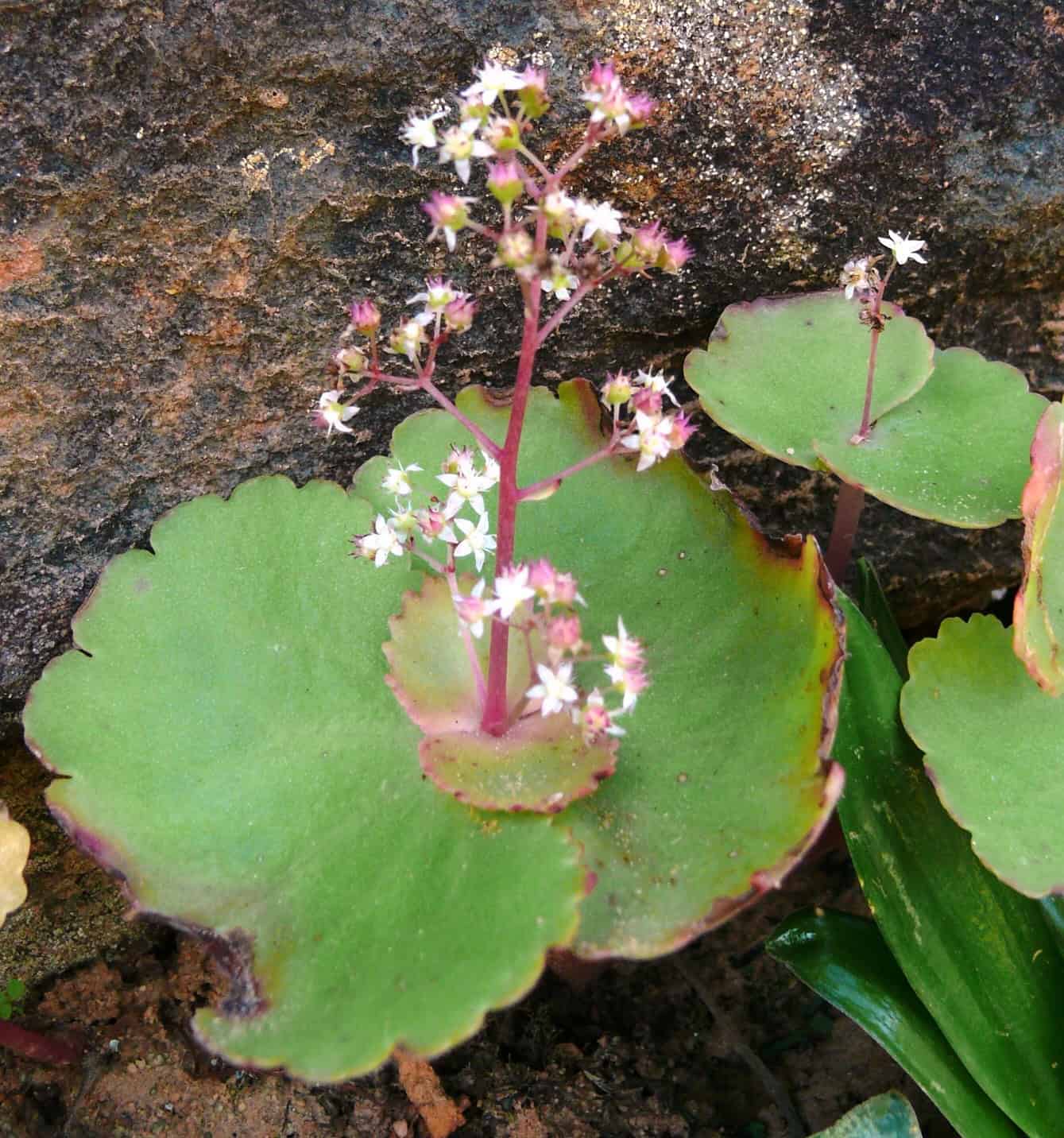
Crassula umbella, commonly known as the Wine Cup, is a succulent that captivates with its unusual appearance. It features green, cup-shaped leaves that form a tight rosette. The plant’s compact size makes it perfect for small spaces. During the blooming season, it produces tiny, yellow-green flowers on thin stalks that rise above the foliage. The leaves’ unique shape resembles a wine glass, which gives the plant its common name. It thrives in bright, indirect light and requires minimal watering, making it easy to care for.
Haworthia truncata (Horse’s Teeth)
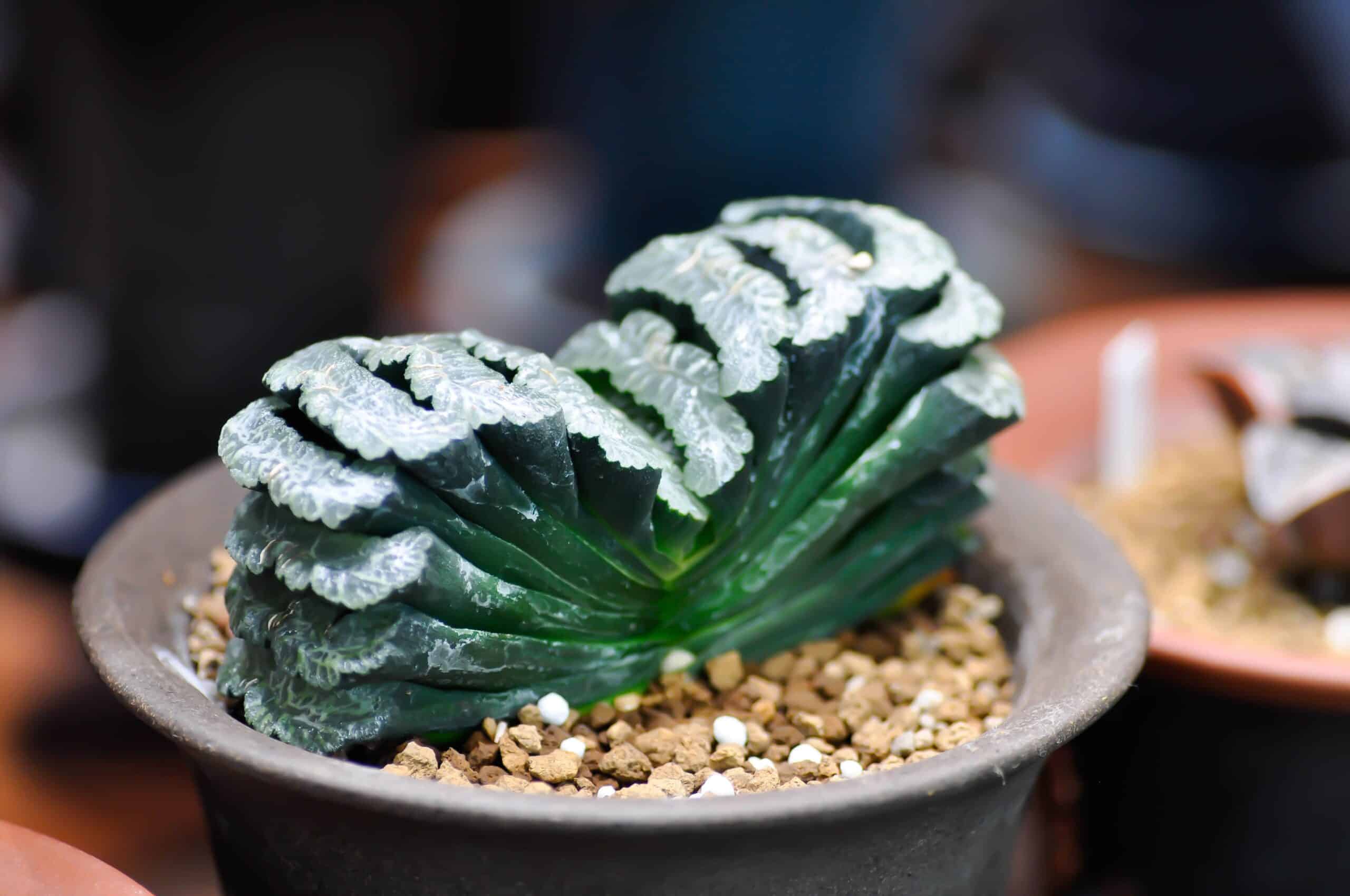
Haworthia truncata, often called Horse’s Teeth, is a distinctive succulent with its flat, truncated leaves. The leaves are arranged in rows, giving the plant a unique, architectural look. Each leaf has a rough, gray-green surface with transparent windows at the top, which allow light to enter for photosynthesis. This succulent is slow-growing and compact, making it ideal for small pots or as part of a succulent arrangement. It prefers bright, filtered light and infrequent watering, making it low-maintenance yet visually striking.
Euphorbia obesa (Baseball Plant)
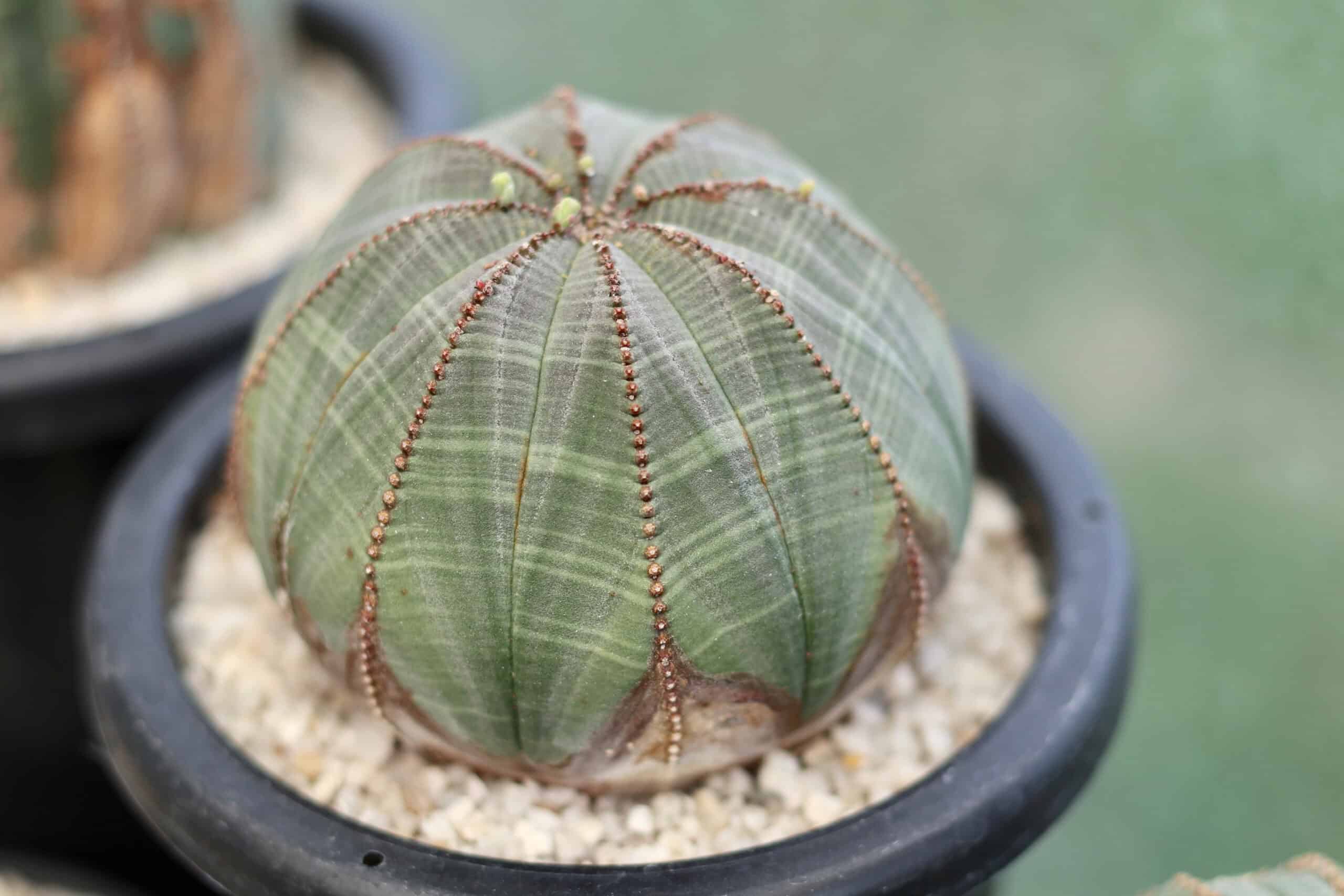
Euphorbia obesa, known as the Baseball Plant, is a round, ball-shaped succulent that looks just like its namesake. Its surface is smooth, green, and marked with subtle ridges that spiral around the plant. As it matures, the plant may develop small, inconspicuous flowers near its top. Despite its appearance, it is not a cactus but a member of the Euphorbia family. This succulent is slow-growing and thrives in bright, indirect light. It requires well-draining soil and occasional watering, making it easy to care for in various settings.
Lithops karasmontana (Living Stones)
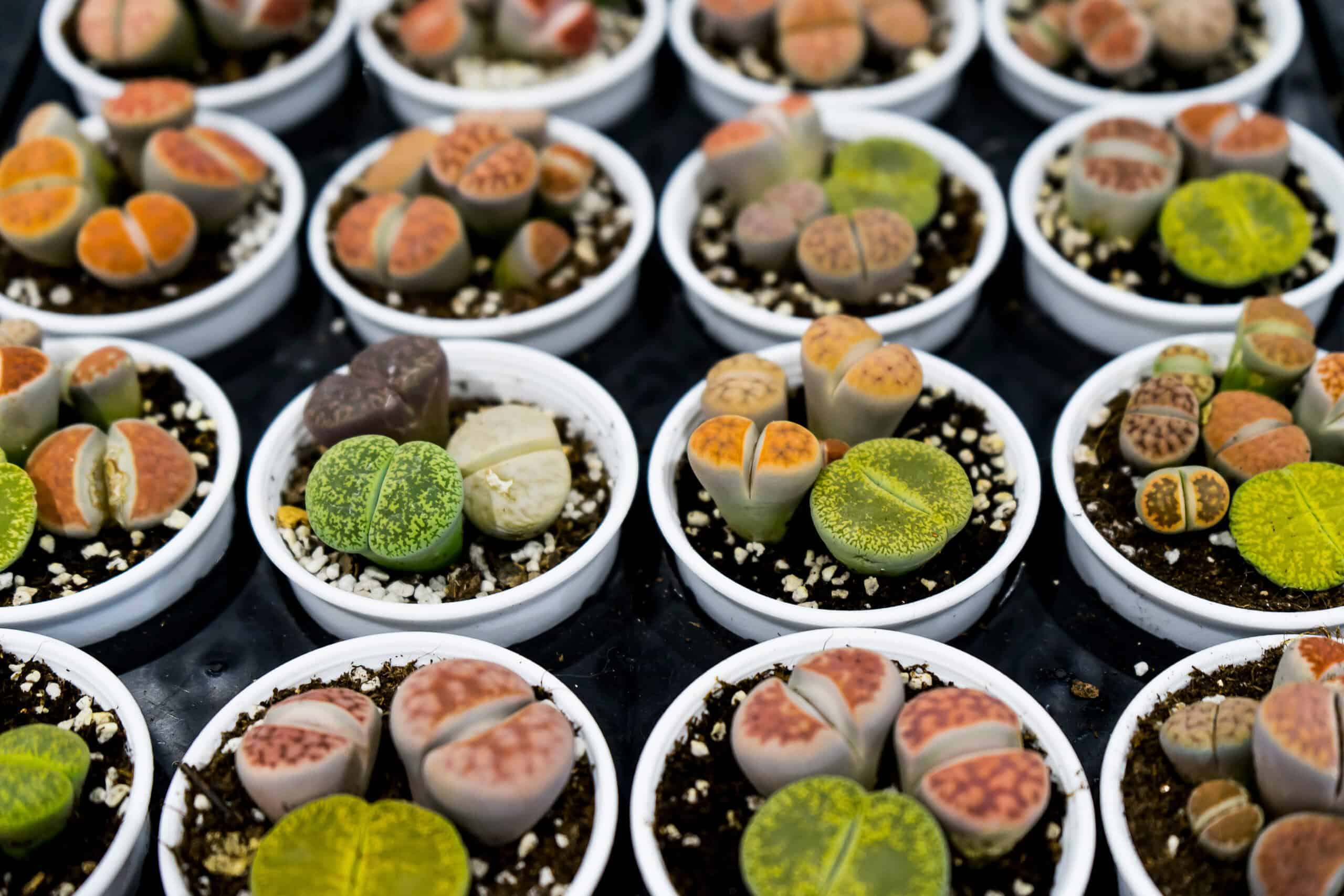
Lithops karasmontana, or Living Stones, is a fascinating succulent that mimics the appearance of small stones or pebbles. Each plant consists of two fleshy, stone-like leaves with a fissure in the middle. The leaves are often gray or brown with intricate patterns that help them blend into their natural rocky environment. During the blooming season, a daisy-like flower emerges from the center, adding a burst of color. These succulents require bright light and minimal water, mimicking their native desert conditions. Their camouflaged appearance makes them a conversation starter in any succulent collection.
Sedum morganianum (Burro’s Tail)
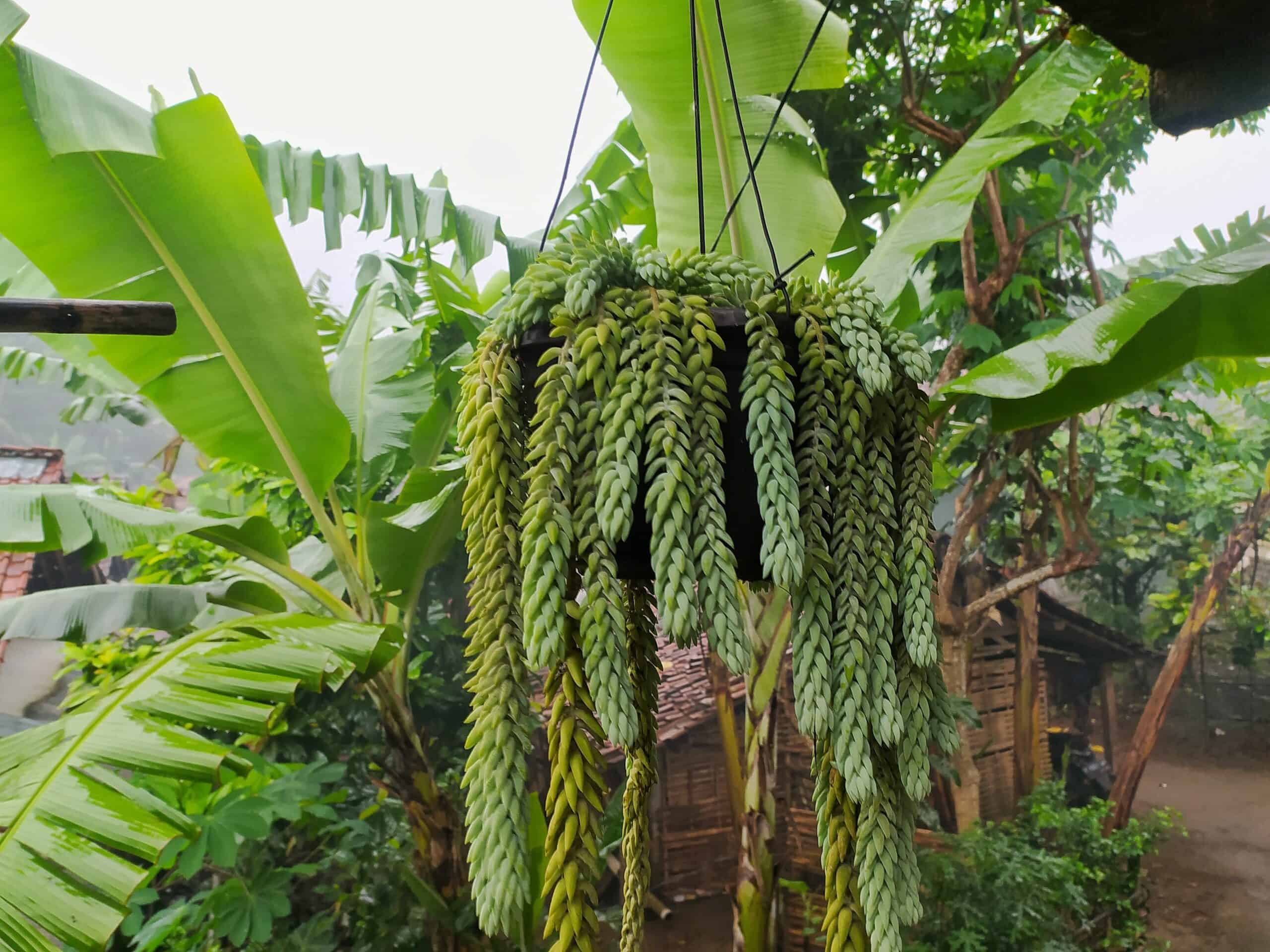
Sedum morganianum, commonly known as Burro’s Tail, is a trailing succulent with long, cascading stems covered in fleshy, blue-green leaves. The leaves are small, plump, and densely packed along the stem, creating a thick, rope-like appearance. This plant is perfect for hanging baskets or draping over the edges of pots. It produces small, pink or red flowers at the tips of its stems in the summer. Burro’s Tail thrives in bright, indirect light and requires well-draining soil. Its trailing nature and unique texture make it a standout addition to any collection.
Senecio peregrinus (String of Dolphins)
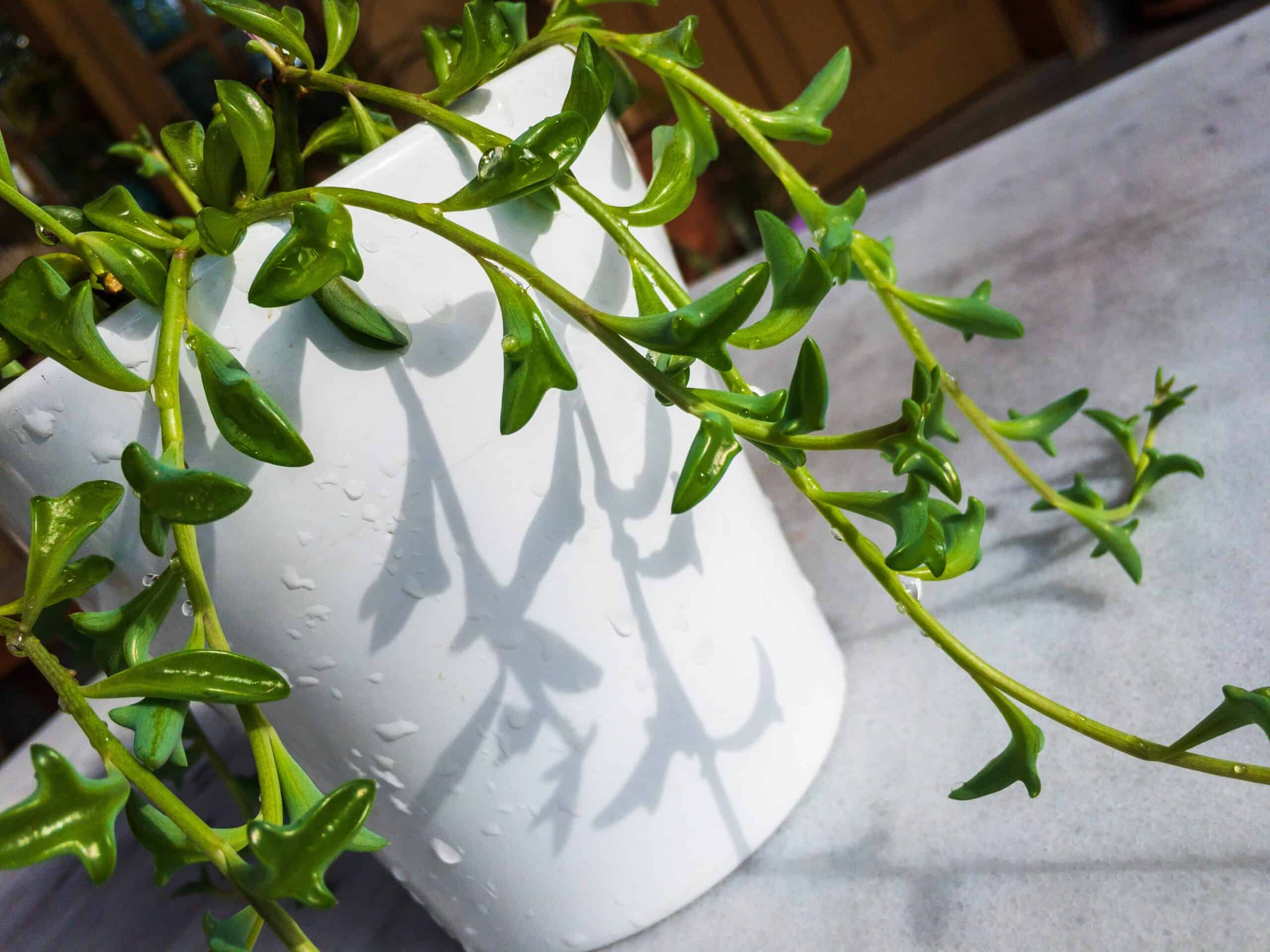
Senecio peregrinus, known as String of Dolphins, is a charming succulent with leaves that resemble tiny dolphins jumping out of the water. The trailing stems are covered in these dolphin-shaped leaves, making it a whimsical addition to any plant collection. The plant is perfect for hanging baskets, where the “dolphins” can cascade down in a playful display. It prefers bright, indirect light and should be watered sparingly, allowing the soil to dry out completely between waterings. This succulent’s unique shape and easy care requirements make it a favorite among plant enthusiasts.
Albuca spiralis (Frizzle Sizzle)
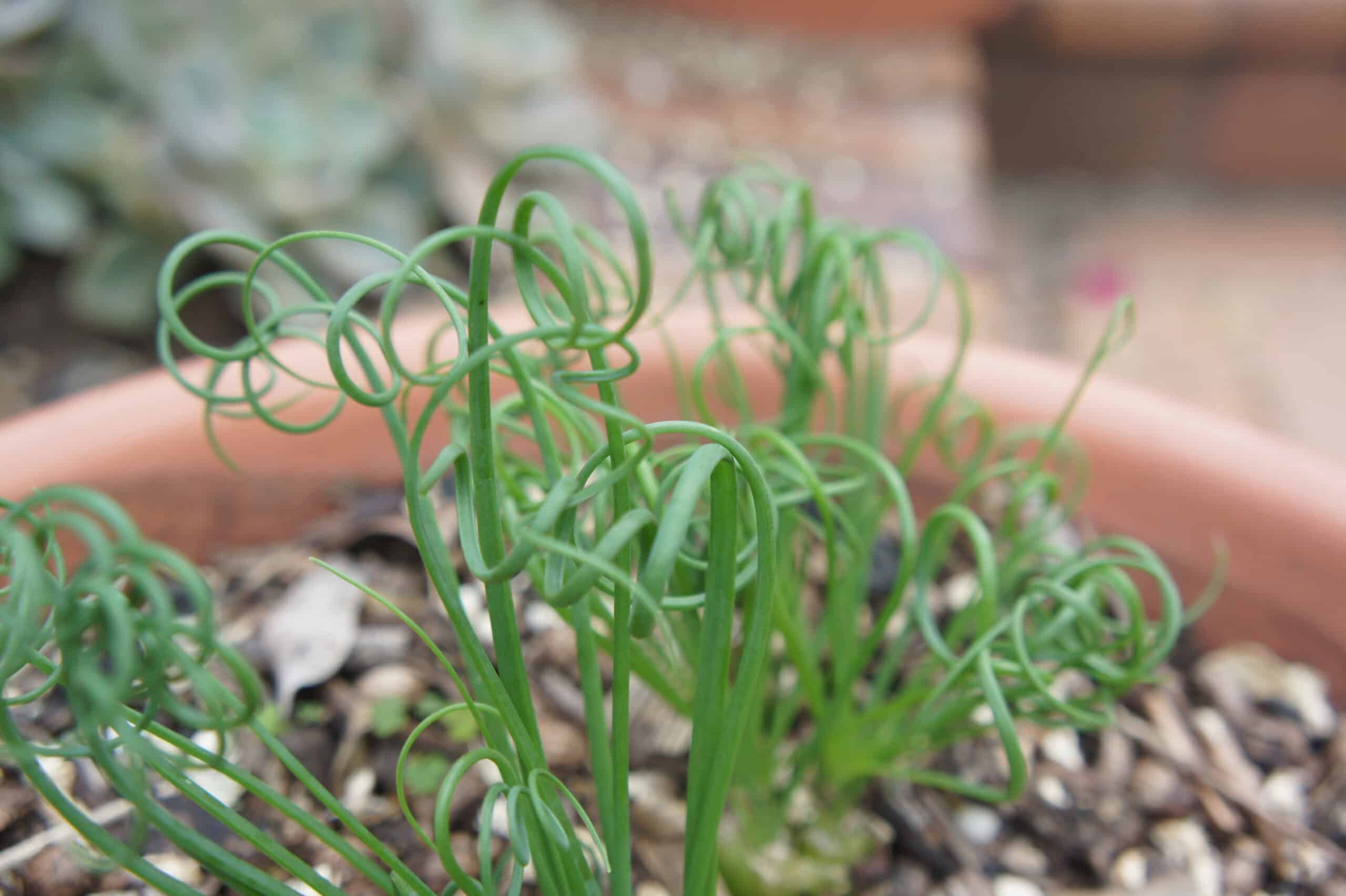
Albuca spiralis, affectionately known as Frizzle Sizzle, is a succulent that stands out with its curly, corkscrew-like leaves. The bright green leaves spiral upwards, giving the plant a whimsical appearance. During the blooming season, it produces tall spikes topped with yellow, bell-shaped flowers that emit a sweet fragrance. This plant prefers bright light and well-draining soil. It requires less water during its dormant period, making it a low-maintenance yet striking addition to any collection. The unique, twisted leaves make Albuca spiralis a true conversation piece.
Conophytum bilobum (Button Plants)
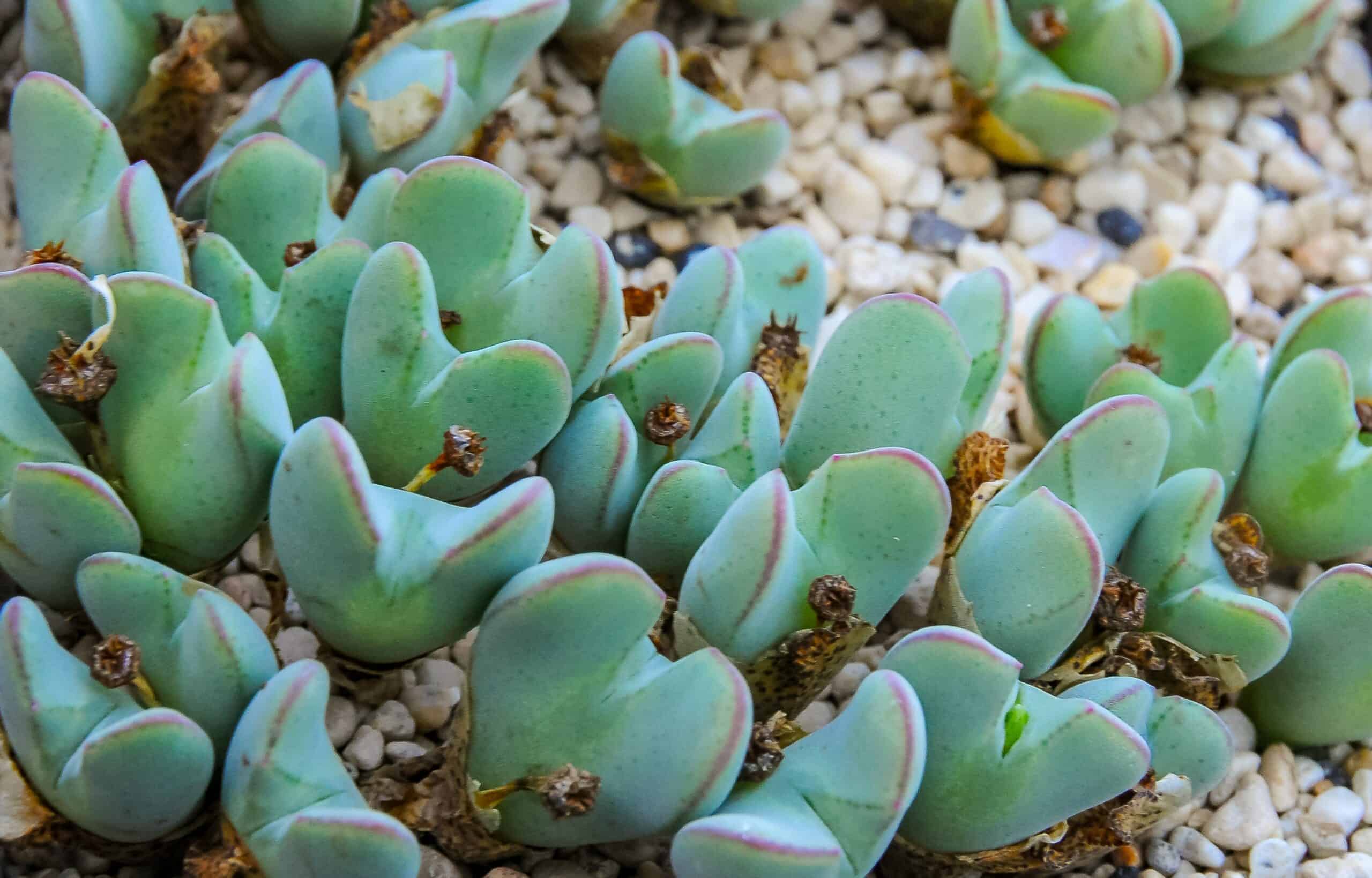
Conophytum bilobum, commonly referred to as Button Plants, is a compact succulent with pairs of thick, rounded leaves that resemble buttons. The leaves are smooth, with a light green to bluish hue, and are fused together at the base. This plant blooms in the fall, producing small, daisy-like flowers that add a splash of color. Button Plants are slow-growing and prefer bright, indirect light. They need minimal water, especially during their summer dormancy. Their petite size and interesting shape make them a charming addition to small succulent arrangements.
Echeveria agavoides (Lipstick Echeveria)
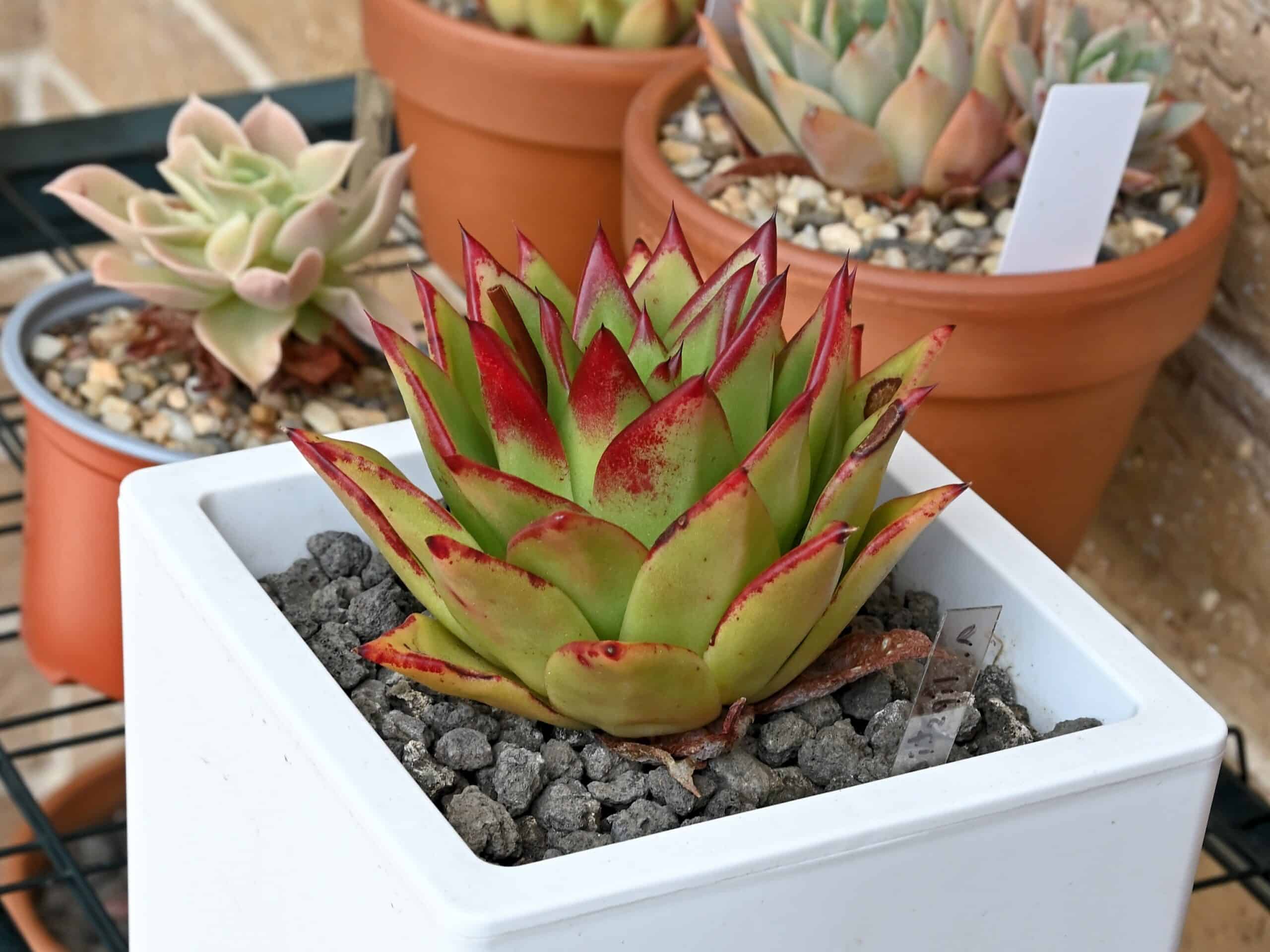
Echeveria agavoides, also known as Lipstick Echeveria, is a stunning succulent with bright green, pointed leaves edged in red. The rosette shape is reminiscent of an agave, but with softer, more delicate leaves. In spring, it produces tall stalks with pink, bell-shaped flowers that attract pollinators. This plant thrives in full sun to partial shade and requires well-draining soil. It needs regular watering during the growing season but should be kept dry in winter. The vibrant colors and sharp form make Lipstick Echeveria a standout in any succulent collection.
Graptopetalum paraguayense (Ghost Plant)
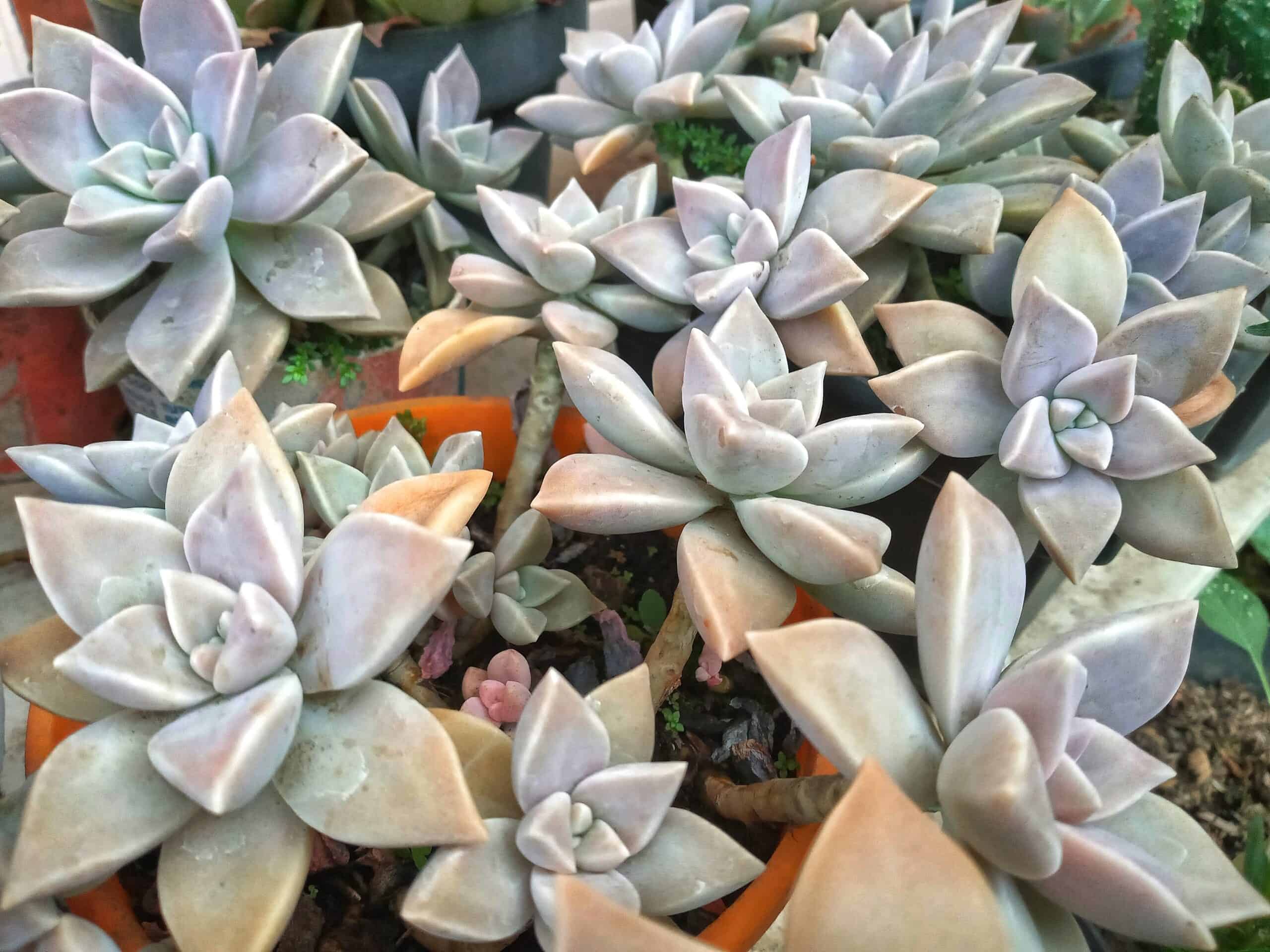
Graptopetalum paraguayense, or Ghost Plant, is a beautiful succulent with pale, silvery-gray leaves that form rosettes. The leaves can take on a pink or purple tint when exposed to bright light. This plant is easy to propagate, as it readily produces offsets and can also grow from leaf cuttings. Ghost Plant thrives in full sun and well-draining soil, needing only occasional watering. Its ability to change color based on sunlight and its graceful, trailing habit make it an excellent choice for both ground cover and hanging baskets.
Kalanchoe tomentosa (Panda Plant)
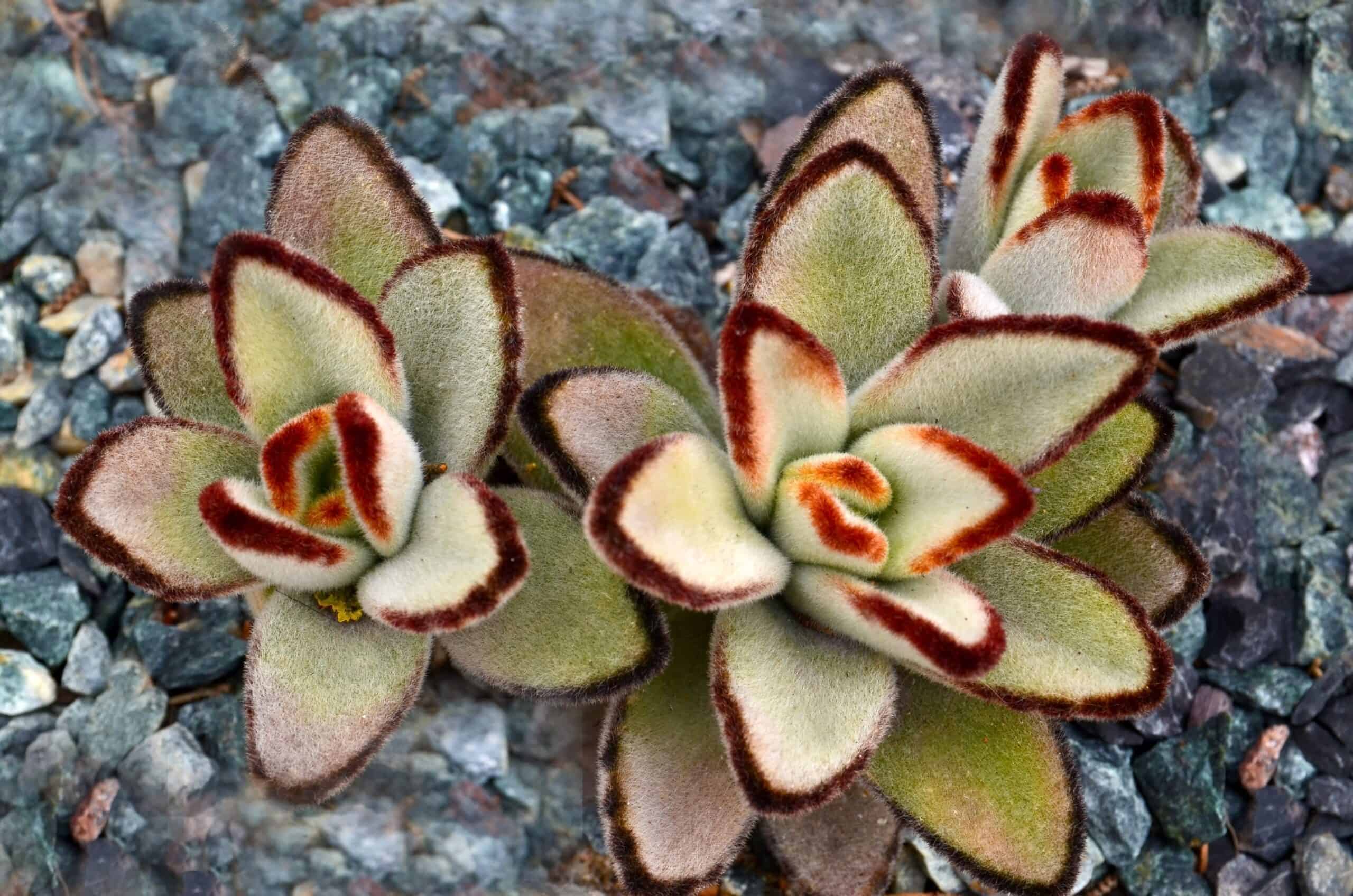
Kalanchoe tomentosa, known as Panda Plant, is a fuzzy, velvety succulent with leaves covered in soft, silvery hairs. The leaves are green with brown edges, giving them a unique, panda-like appearance. This plant is slow-growing and compact, making it ideal for small spaces. Panda Plant prefers bright, indirect light and should be watered sparingly to avoid root rot. Its soft texture and distinctive coloration make it a delightful addition to any succulent collection, adding both visual and tactile interest.
Monilaria obconica (Bunny Ears)
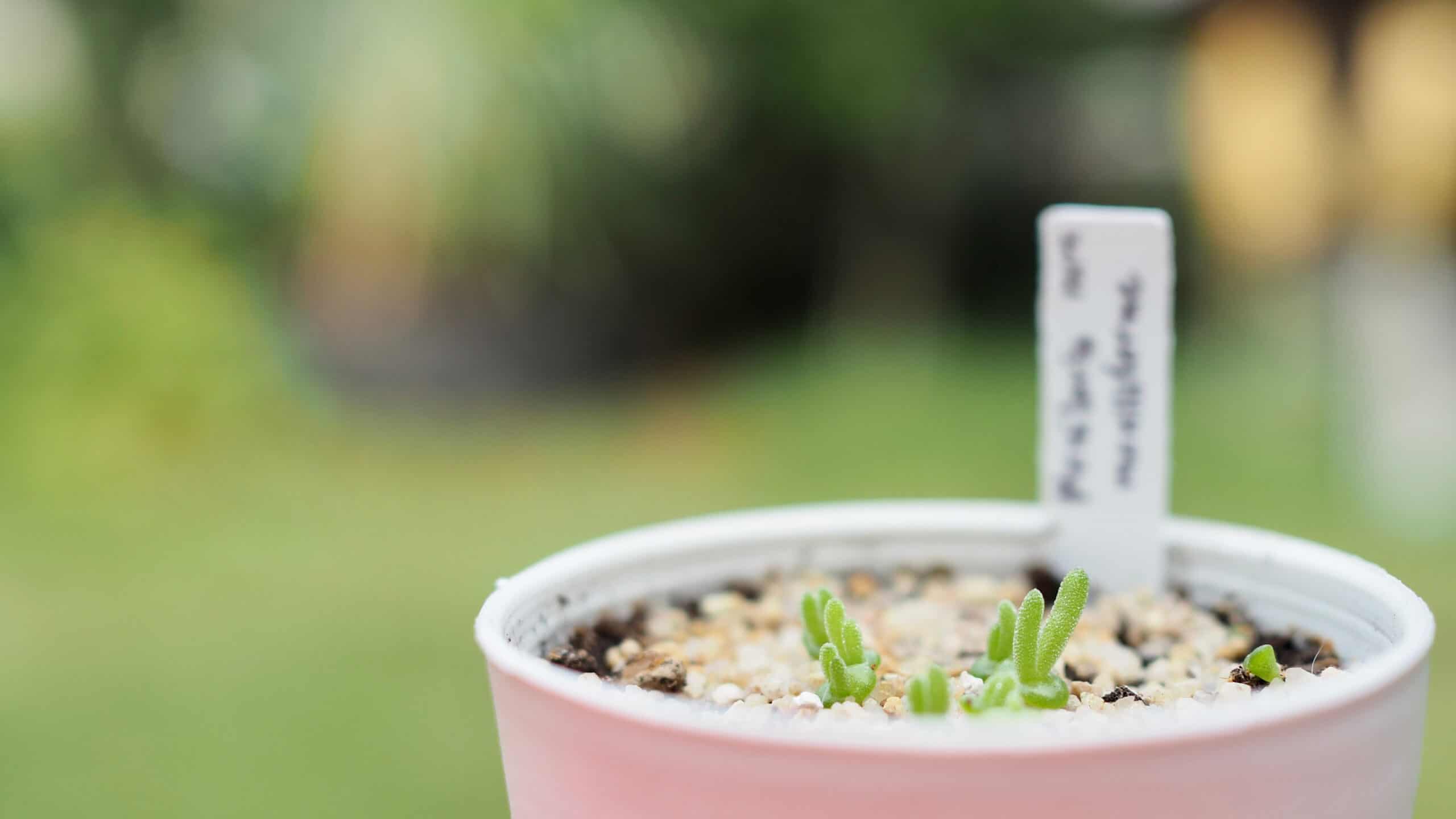
Monilaria obconica, often called Bunny Ears, is a quirky succulent with two long, green leaves that resemble rabbit ears. These leaves grow from a small, bulbous base, giving the plant its playful appearance. As it matures, the plant can develop more “ears,” adding to its charm. Bunny Ears prefer bright light and well-draining soil. They require minimal watering, particularly during their dormant period. This plant’s fun, whimsical shape makes it a favorite among succulent enthusiasts, adding a touch of whimsy to any collection.
Othonna capensis (Little Pickles)
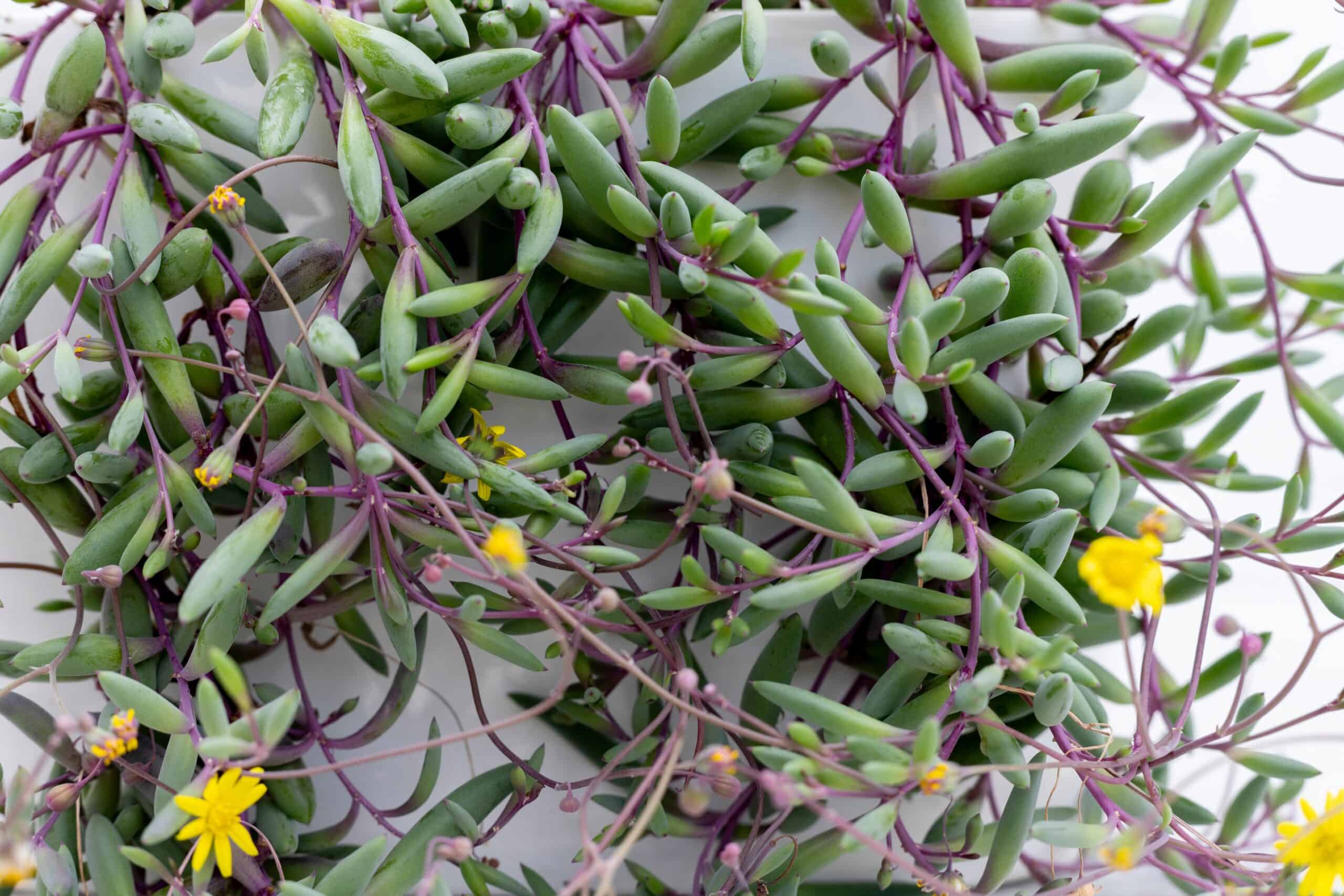
Othonna capensis, commonly known as Little Pickles, is a trailing succulent with slender, cylindrical leaves that resemble tiny pickles. The leaves are bluish-green and can turn reddish-purple in bright sunlight. In spring and summer, it produces small, daisy-like yellow flowers. Little Pickles is an excellent choice for hanging baskets or as ground cover due to its trailing nature. It thrives in full sun and requires well-draining soil. Its unique leaf shape and vibrant colors make it a delightful addition to any succulent garden.
Pachyphytum oviferum (Moonstones)
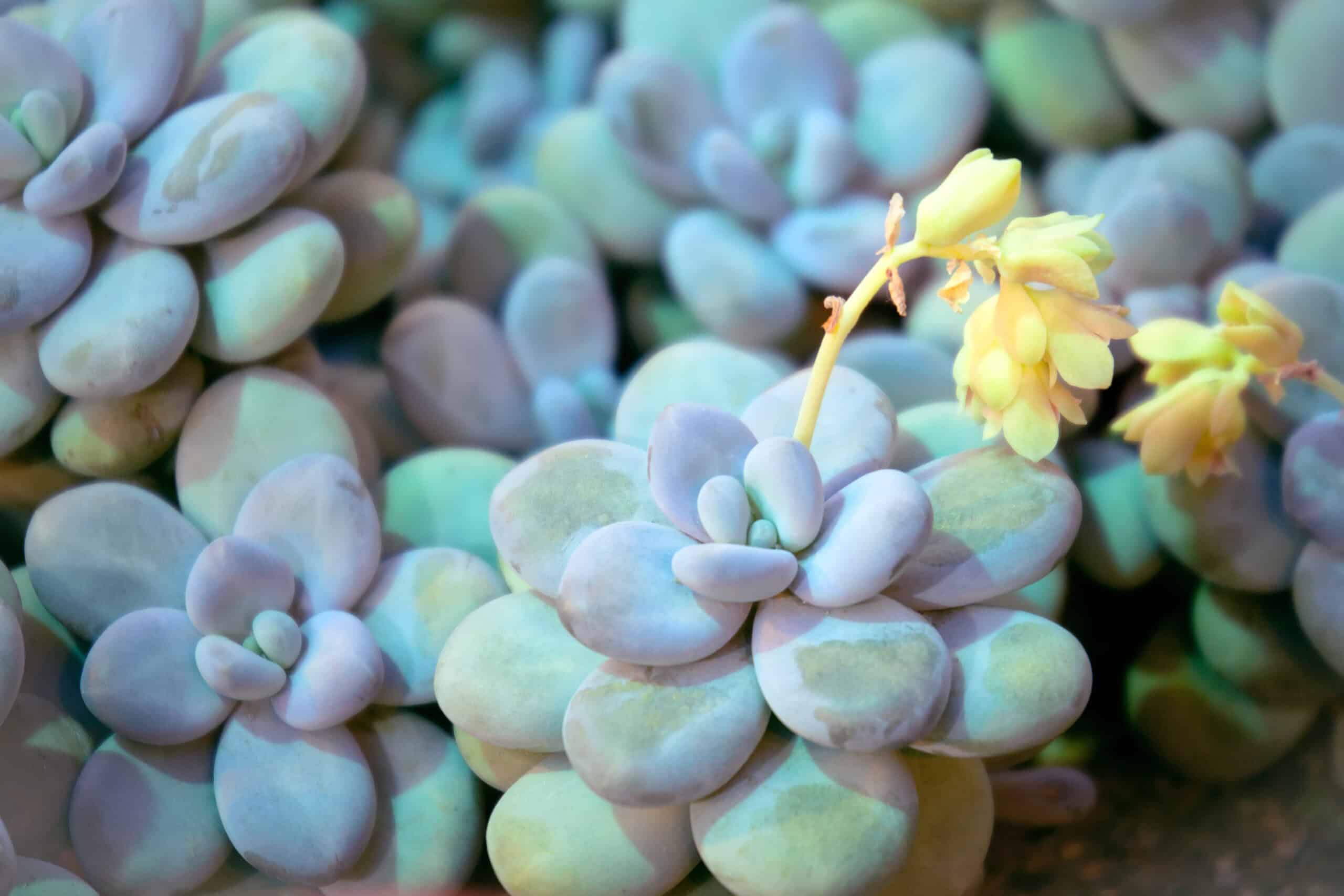
Pachyphytum oviferum, commonly known as Moonstones, is a succulent with plump, rounded leaves that resemble smooth pebbles. The leaves are a soft, pale blue or pink, giving them an ethereal, moon-like quality. This plant forms a compact rosette, with each leaf coated in a powdery, protective layer that adds to its soft appearance. It prefers bright, indirect light and should be watered sparingly to prevent the leaves from splitting. Moonstones thrive in well-draining soil and are perfect for adding a serene, otherworldly vibe to any succulent collection.
Peperomia columella
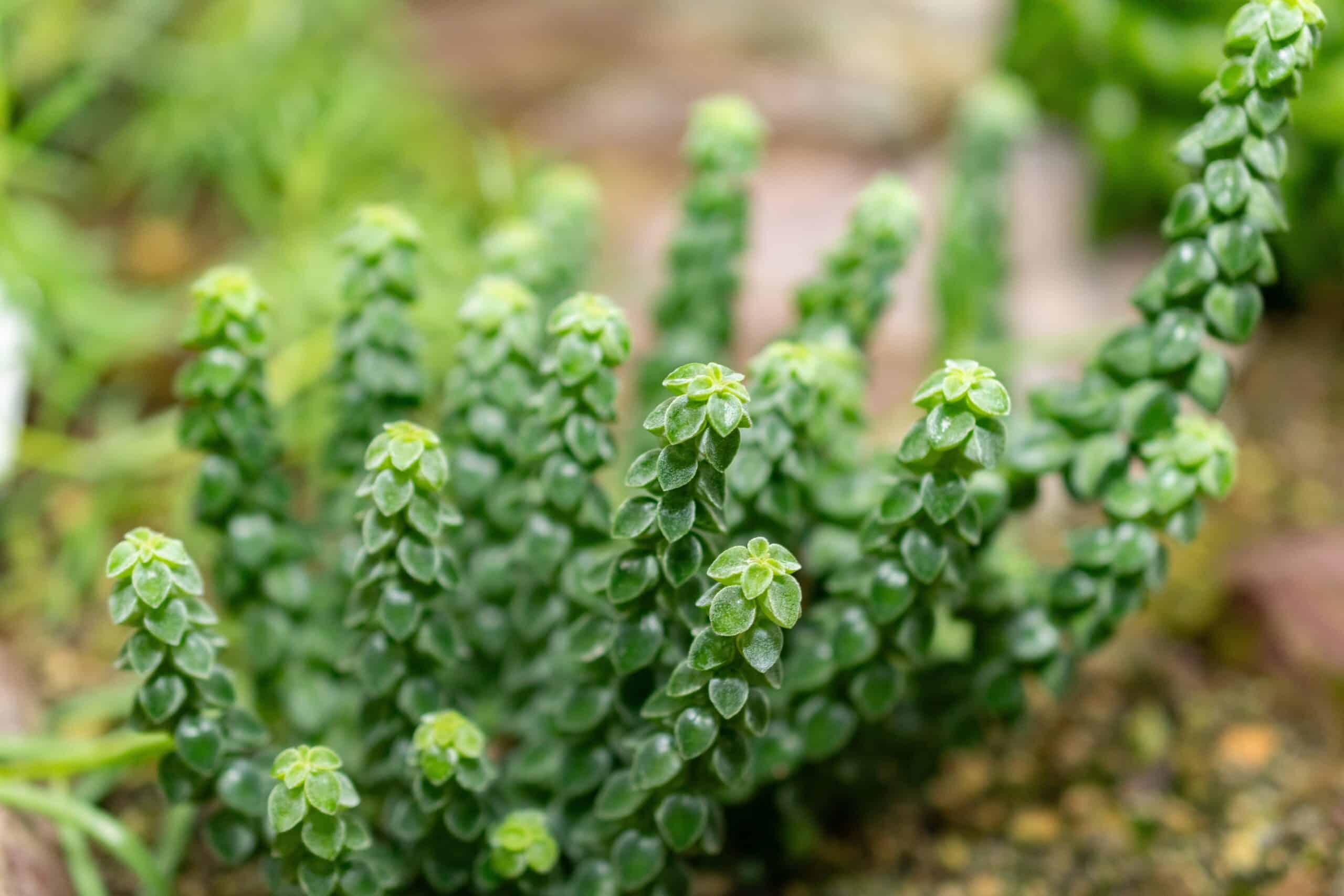
Peperomia columella is a striking succulent with tall, columnar stems covered in overlapping, triangular leaves. The leaves are bright green and densely packed along the stem, giving the plant a unique, architectural look. Each leaf has a translucent window that allows light to pass through, aiding in photosynthesis. This plant prefers bright, indirect light and should be watered when the soil is completely dry. Its unusual structure and easy care make Peperomia columella an excellent choice for anyone looking to add a distinctive, modern touch to their plant collection.
Pseudolithos migiurtinus
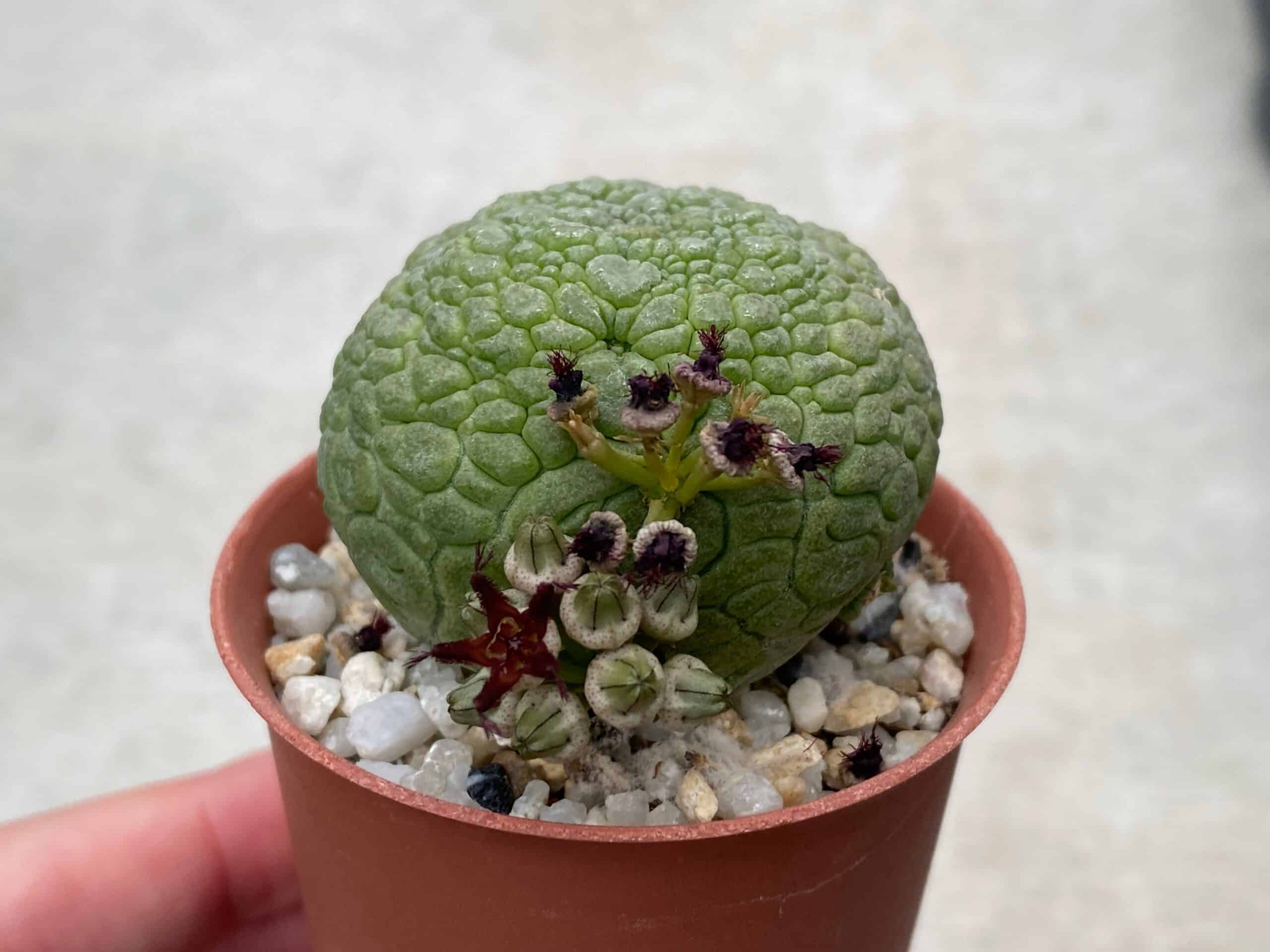
Pseudolithos migiurtinus is a rare succulent that closely resembles a small, lumpy rock. Its rough, grayish-green surface is covered in tiny, warty bumps, making it blend seamlessly into its natural, rocky surroundings. This plant is highly prized for its unique, stone-like appearance and its ability to survive in harsh, arid conditions. It requires very little water and thrives in bright, indirect light. Pseudolithos migiurtinus is a slow grower, making it a low-maintenance and intriguing addition to any succulent enthusiast’s collection.
Senecio rowleyanus (String of Pearls)
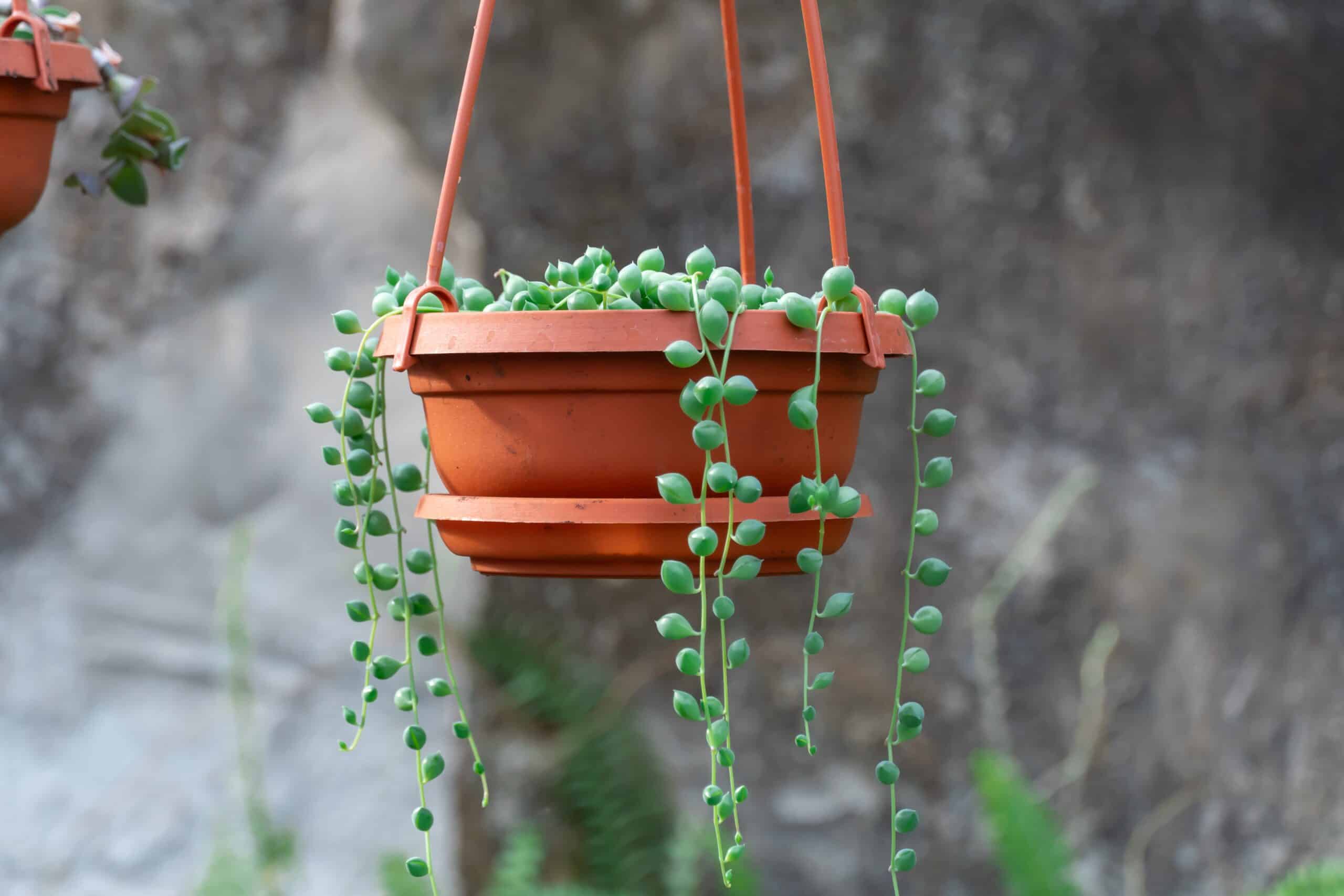
Senecio rowleyanus, known as String of Pearls, is a trailing succulent with bead-like leaves that resemble a string of green pearls. The leaves grow along thin, delicate stems, creating a cascading effect that is perfect for hanging baskets. This plant produces small, white flowers that have a cinnamon-like fragrance. String of Pearls prefers bright, indirect light and should be watered sparingly, allowing the soil to dry out between waterings. Its unique, flowing form and easy care make it a popular choice for both beginners and experienced plant lovers.
Stapelia gigantea (Carrion Flower)
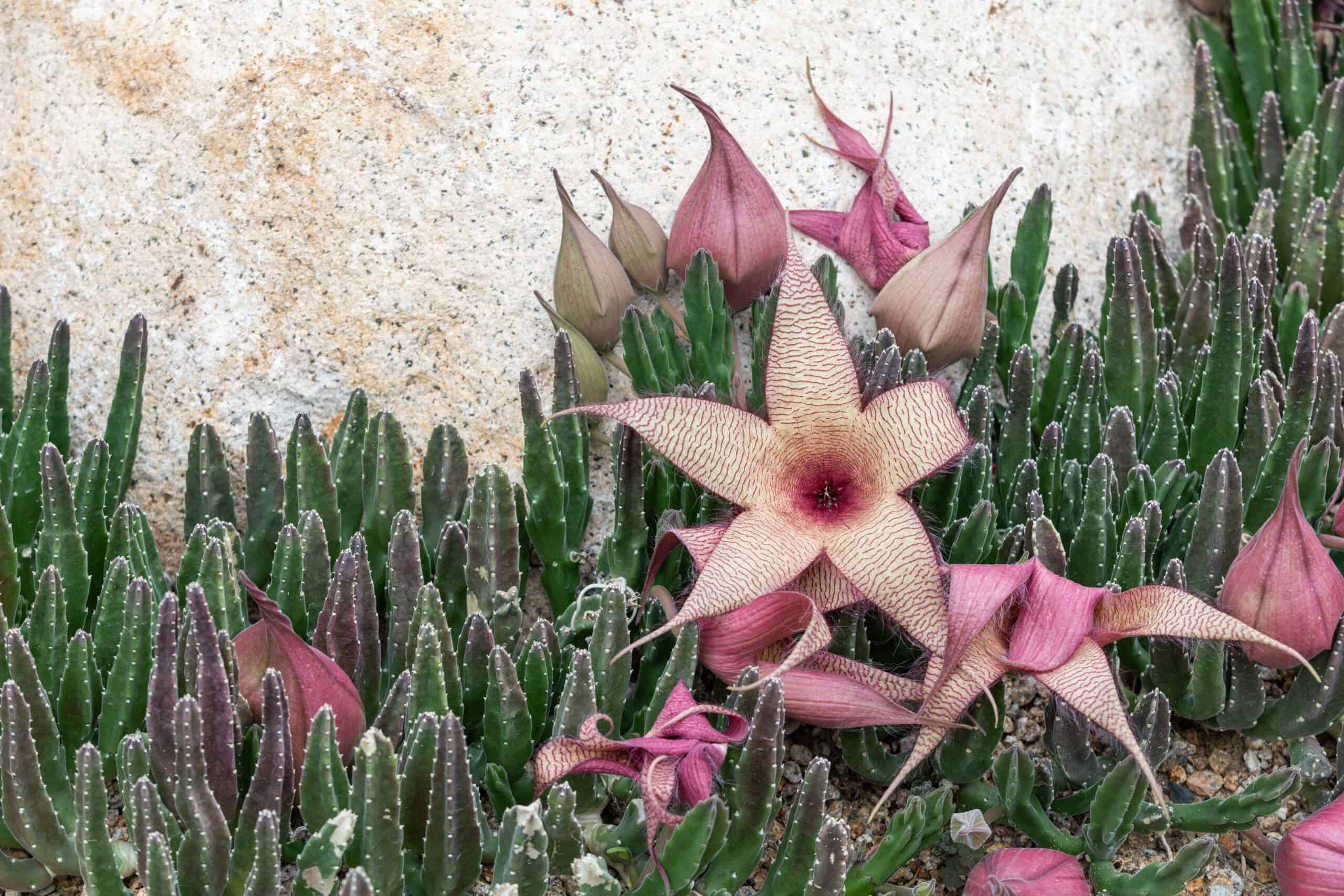
Stapelia gigantea, commonly called the Carrion Flower, is a succulent known for its large, star-shaped flowers that emit a strong odor resembling rotting flesh. The flowers are pale yellow with red stripes and covered in fine hairs, mimicking the appearance of decaying meat to attract pollinators like flies. The plant itself has thick, green, cactus-like stems that grow upright. It thrives in bright light and well-draining soil, requiring minimal water. Despite its unpleasant scent, the Carrion Flower is highly valued for its dramatic blooms and unusual pollination strategy.
Tylecodon reticulatus (Klein Karoo Gollum)
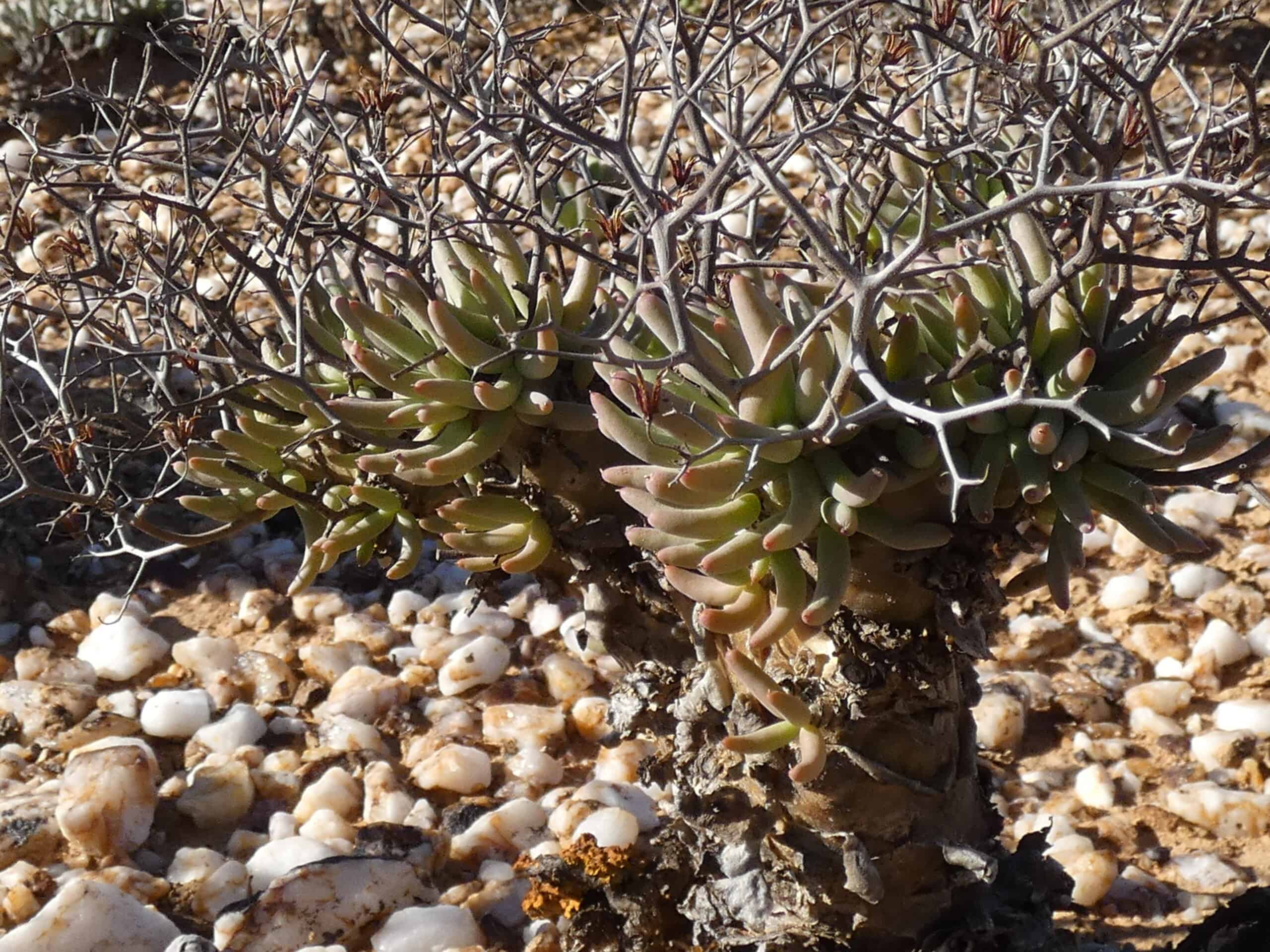
Tylecodon reticulatus, also known as Klein Karoo Gollum, is a peculiar succulent with thick, swollen stems and small, fleshy leaves that cluster at the top. The leaves are green with a red tint, adding to the plant’s distinctive appearance. This succulent is native to South Africa and is adapted to survive in harsh, dry conditions. It prefers full sun and requires minimal watering, especially during its winter dormancy. The plant’s unusual shape and resilience make it a fascinating addition to any succulent collection, especially for those who appreciate rare and unusual species.
Adromischus cristatus (Crinkle-Leaf Plant)

Adromischus cristatus, commonly known as the Crinkle-Leaf Plant, is a small, compact succulent with thick, triangular leaves that have wavy, crinkled edges. The leaves are bright green and often have reddish tips, adding a splash of color to their distinctive texture. This plant grows slowly and remains relatively small, making it ideal for tabletop displays or as part of a succulent arrangement. It prefers bright, indirect light and well-draining soil, with minimal watering needed to keep it healthy. The unique, crinkled leaves make Adromischus cristatus a charming and easy-to-care-for addition to any succulent collection.
This article originally appeared on Rarest.org.
More from Rarest.org
1936 Buffalo Nickel Value Guide
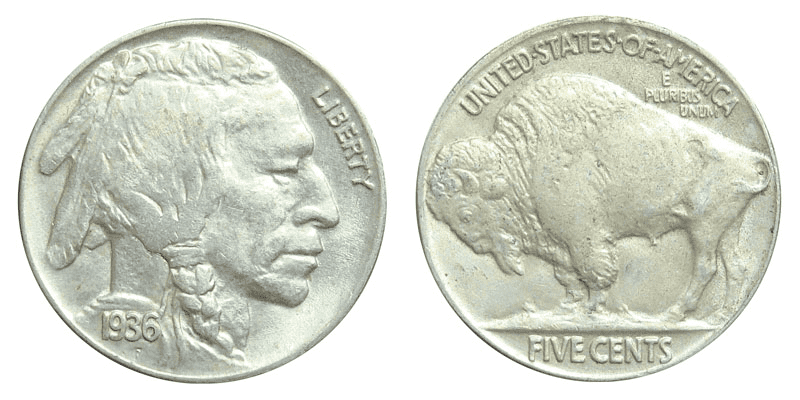
The Nickel 1936 coin had a history of divisive designs before becoming one of the most widely produced and exquisitely designed coins of the 19th century. Read More.
1995 Roosevelt Dime Value Guide
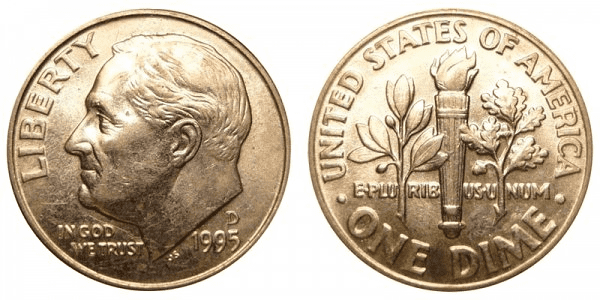
The 1995 Roosevelt dime features the 32nd president of the United States. This coin was struck about 30 years ago. Read More.
1942 Wheat Penny Value Guide
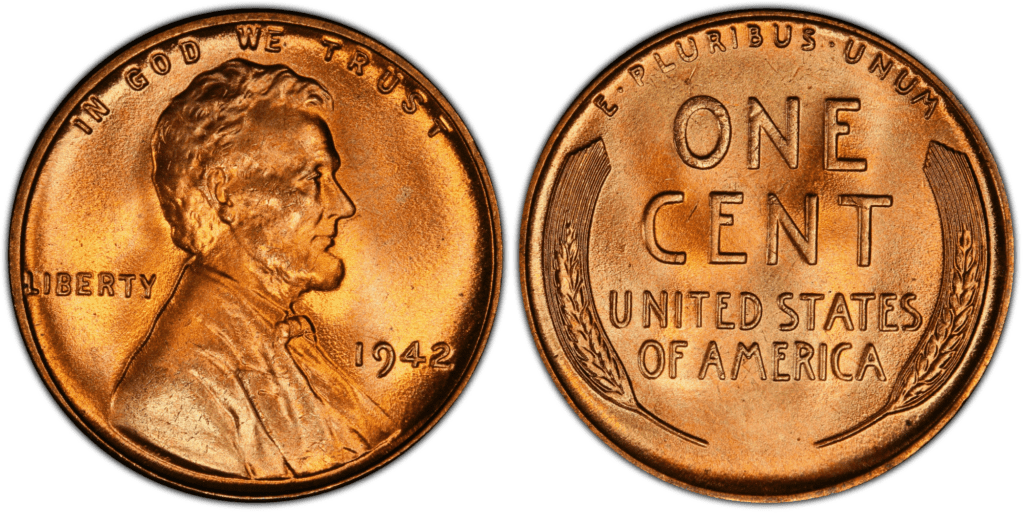
Victor D. Brenner designed the 1942 Lincoln Wheat Penny, one of the one-cent coins struck for circulation from 1909 to 1958. Read More.
